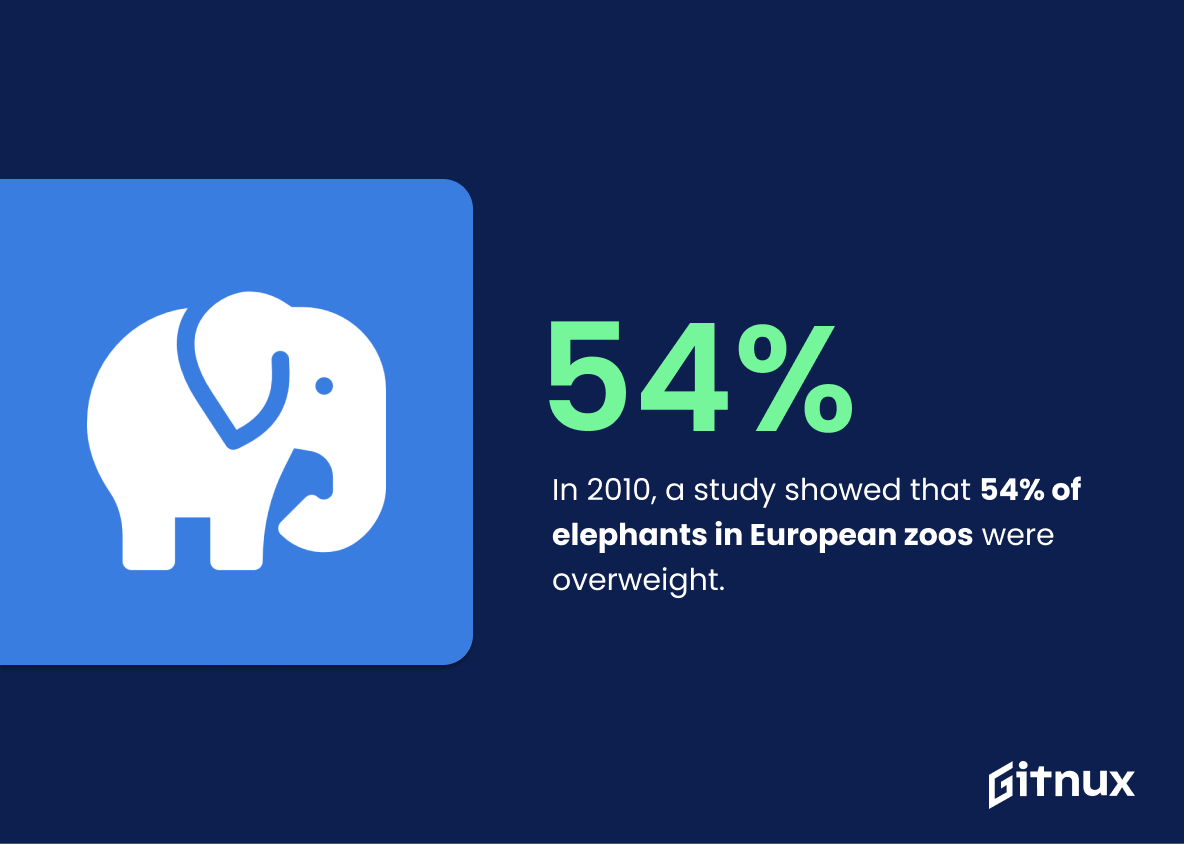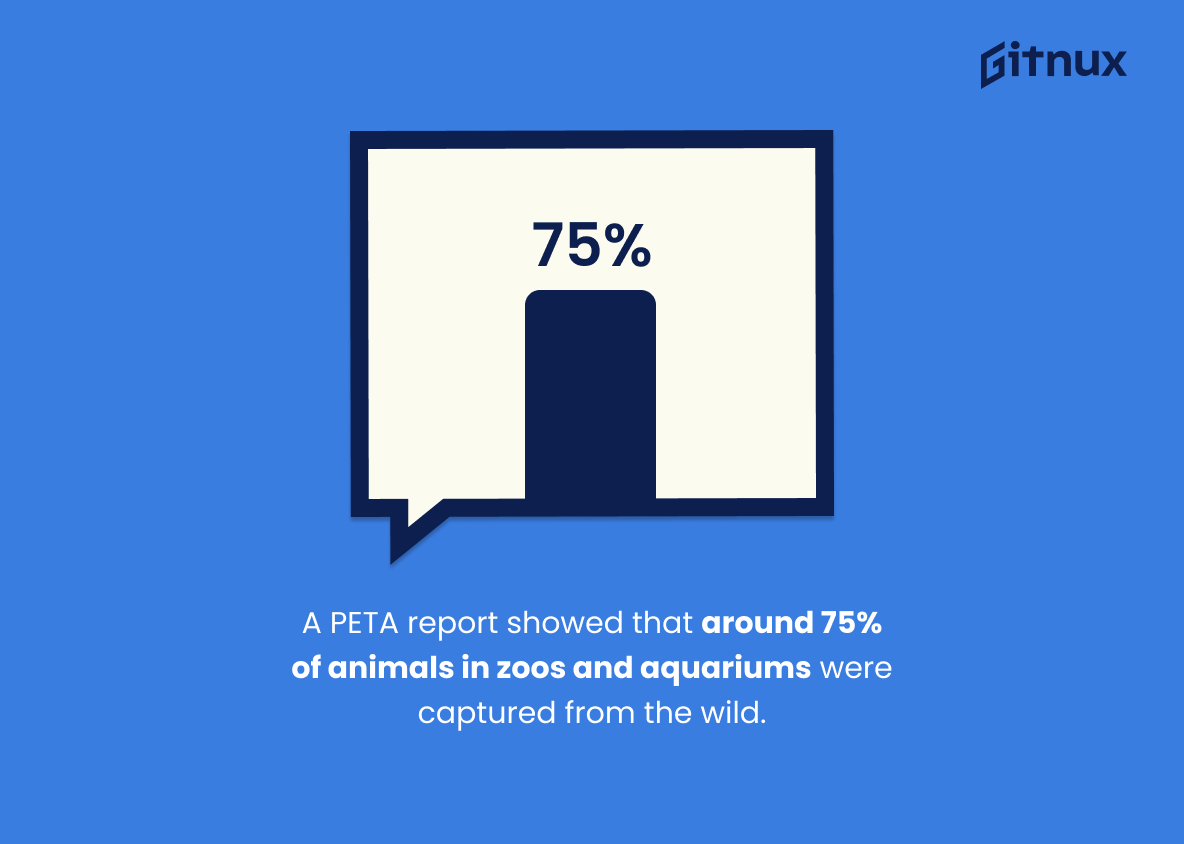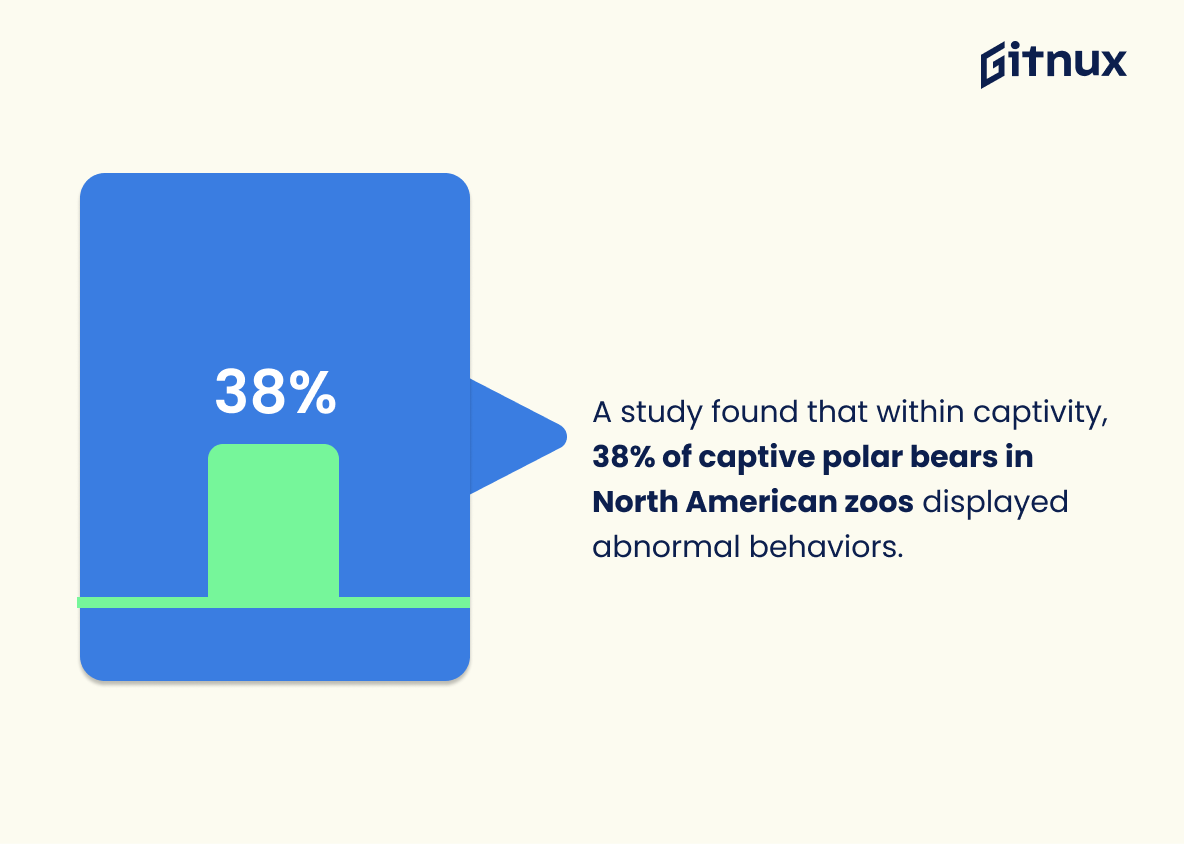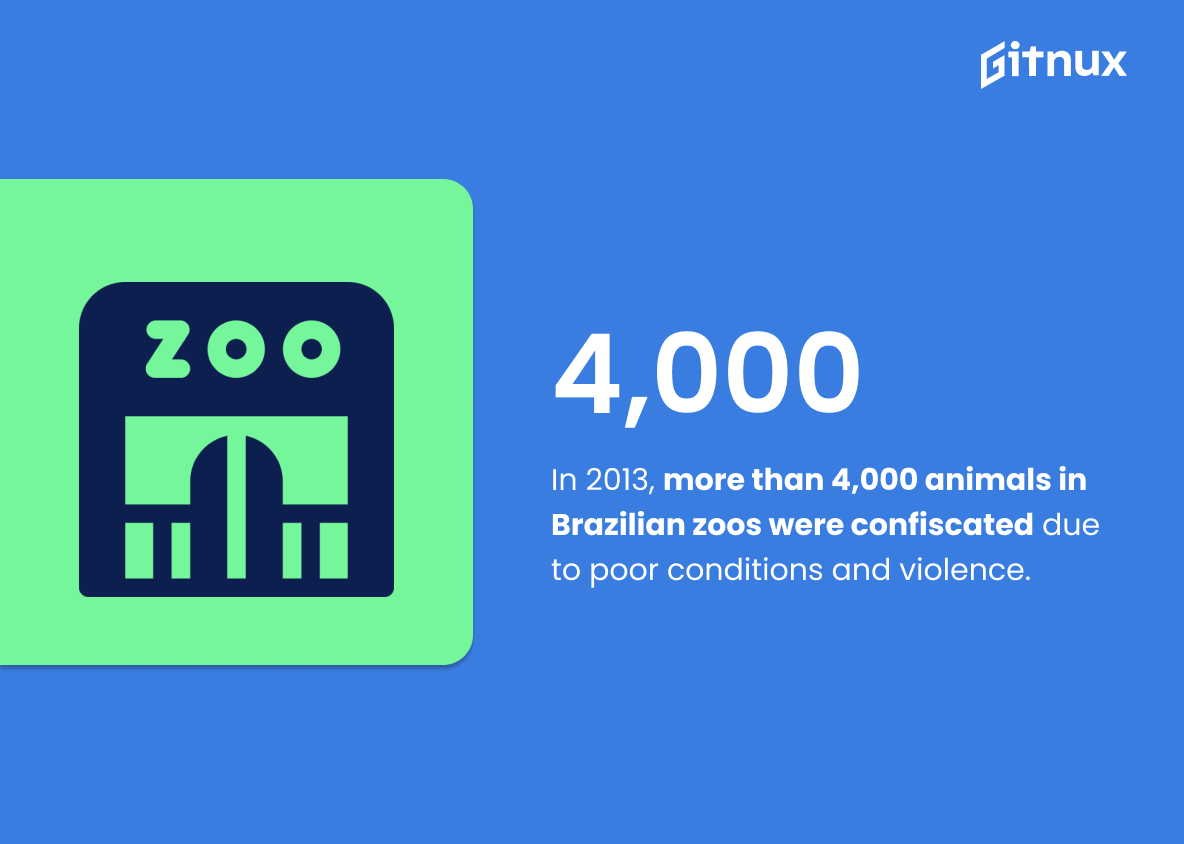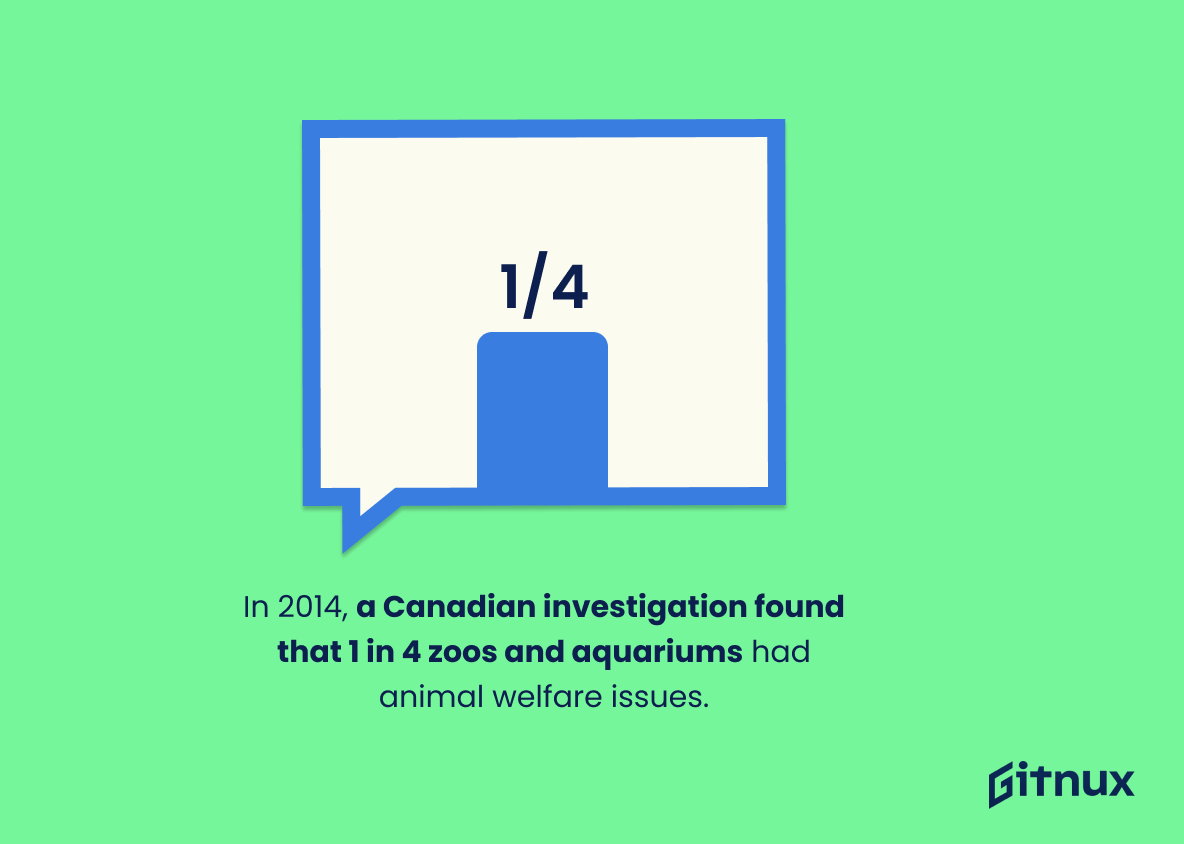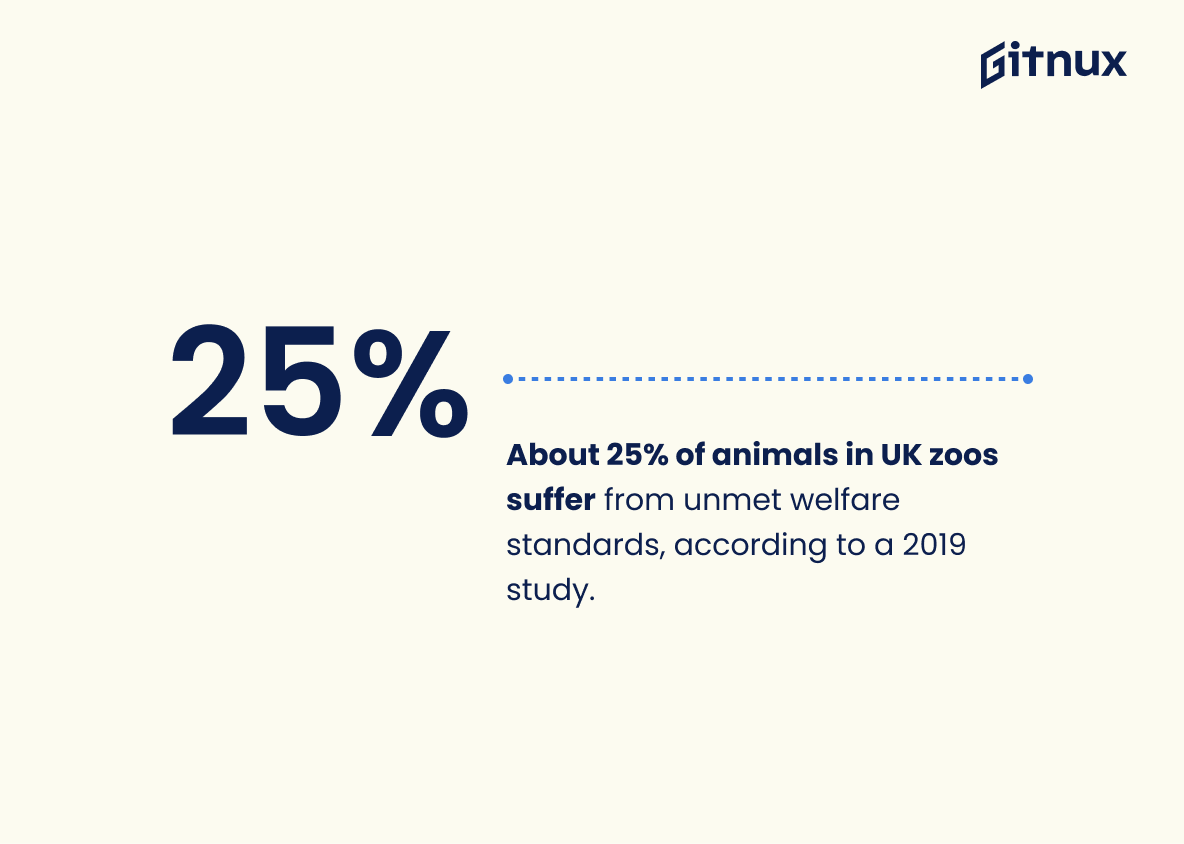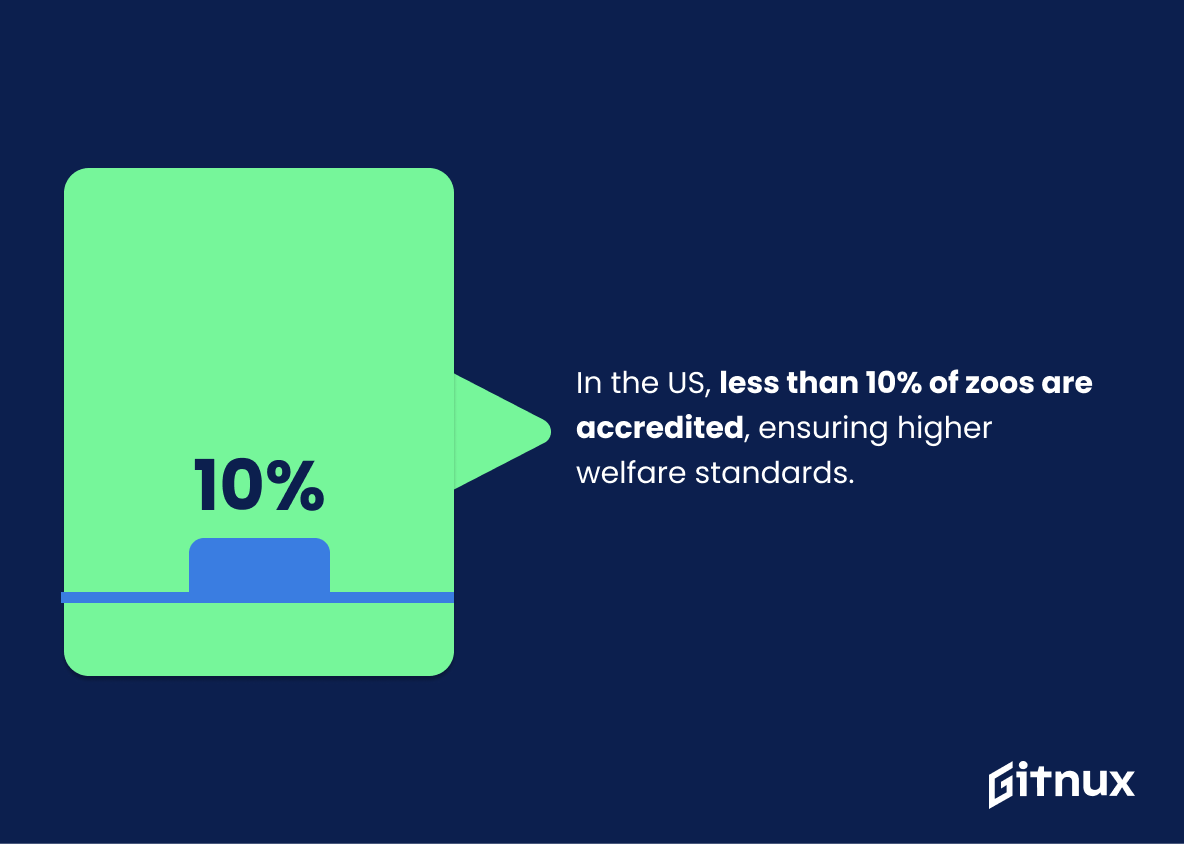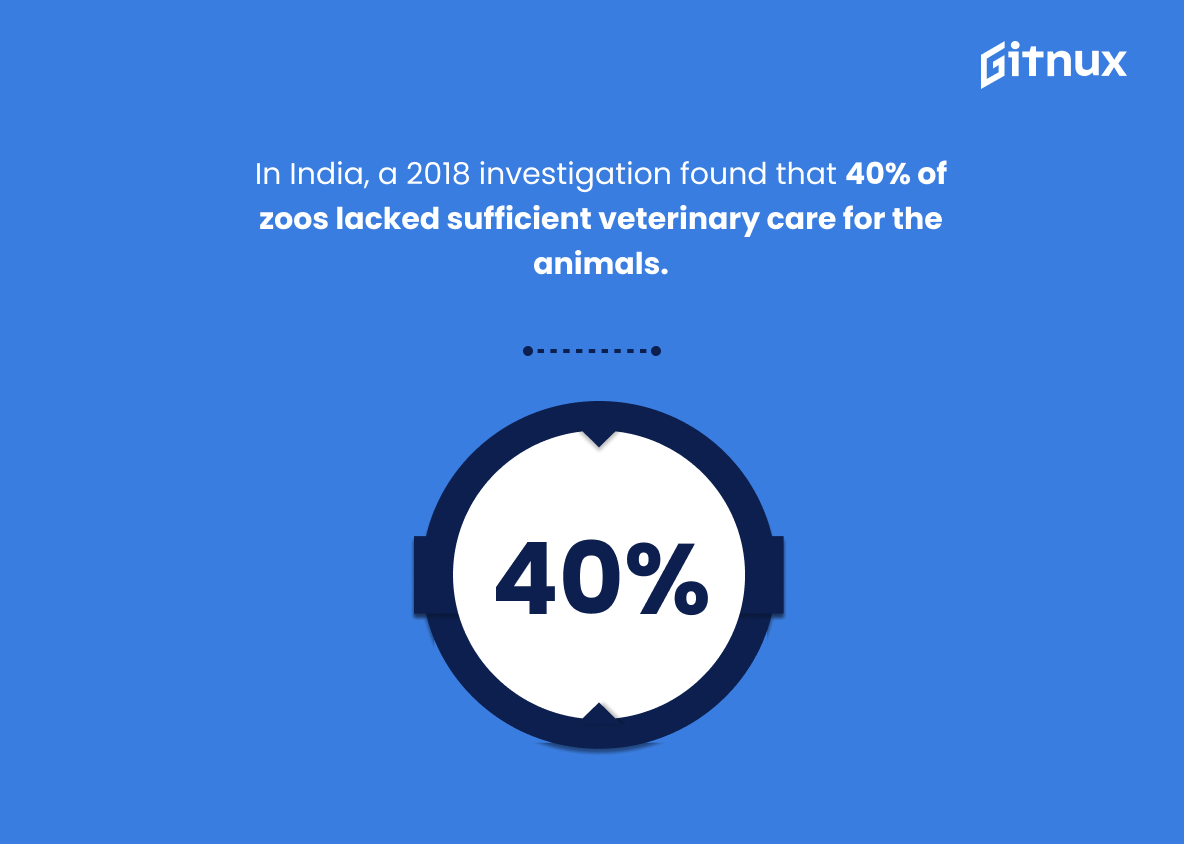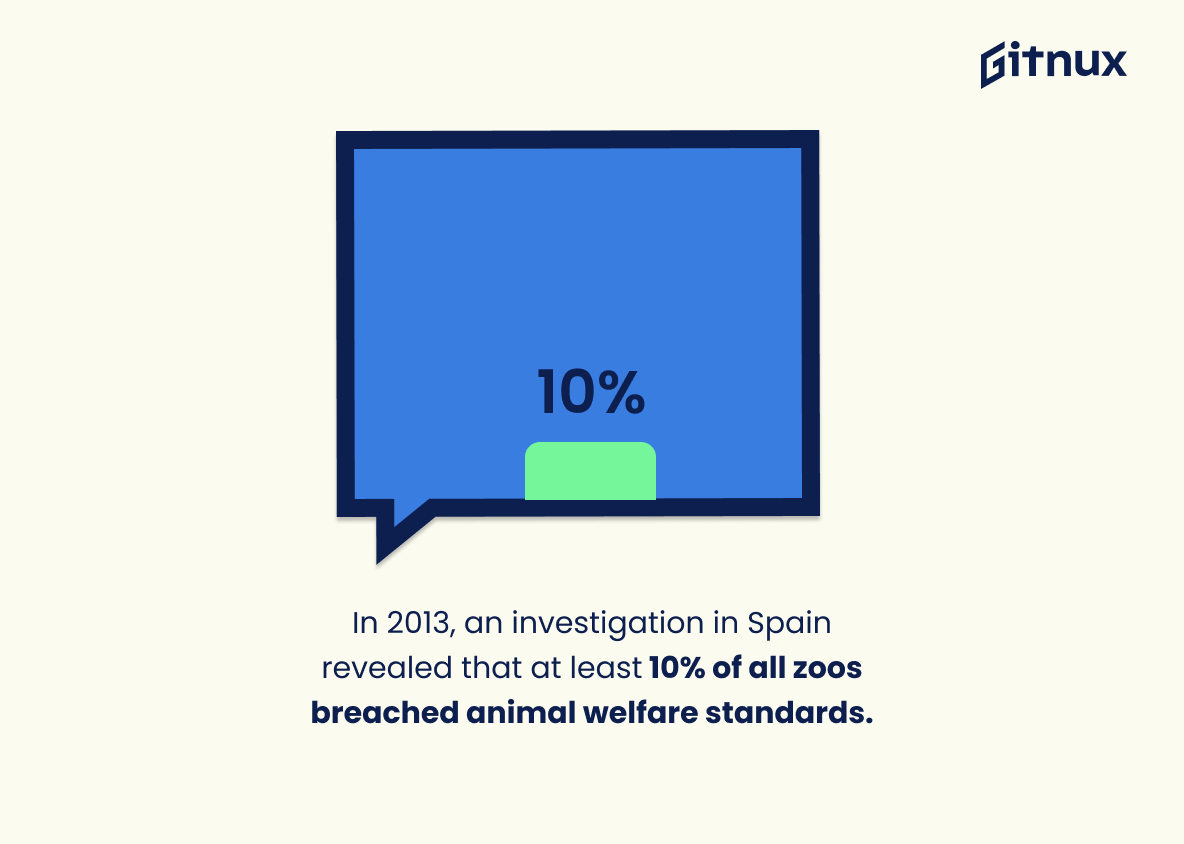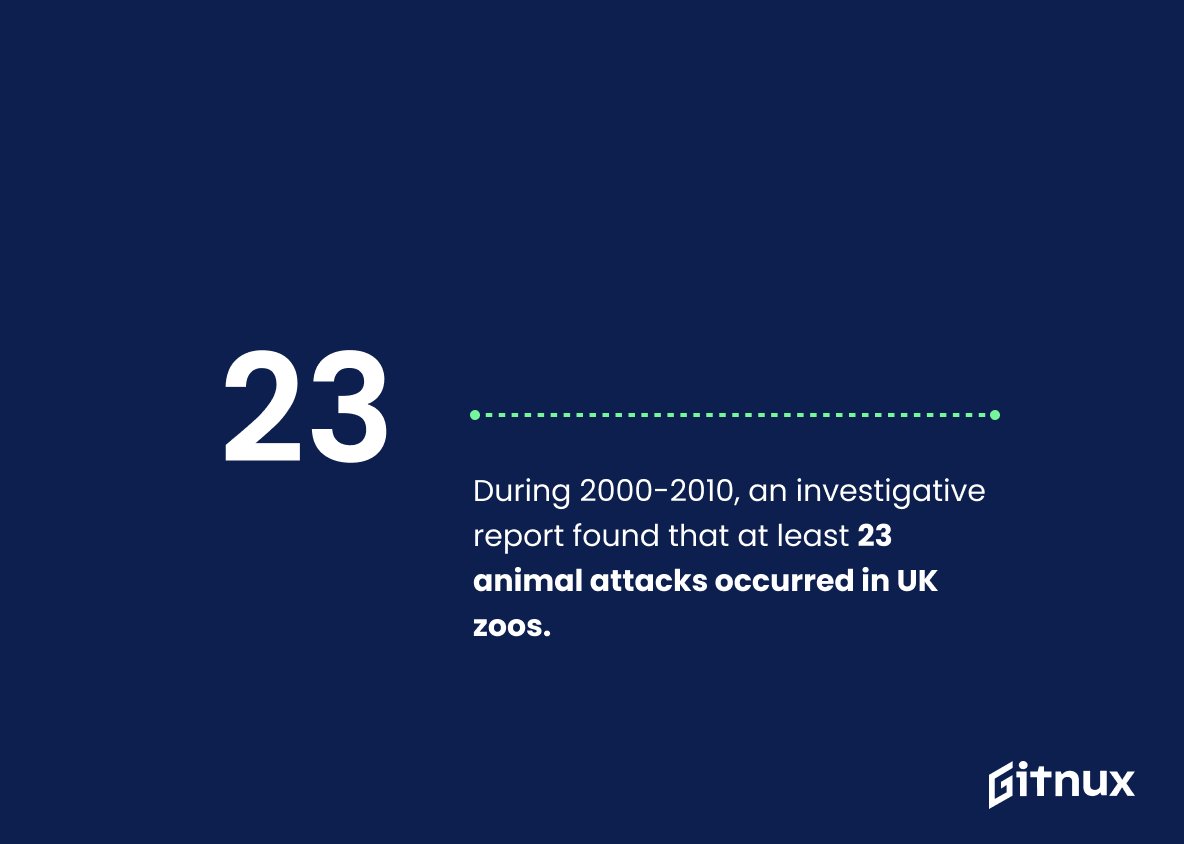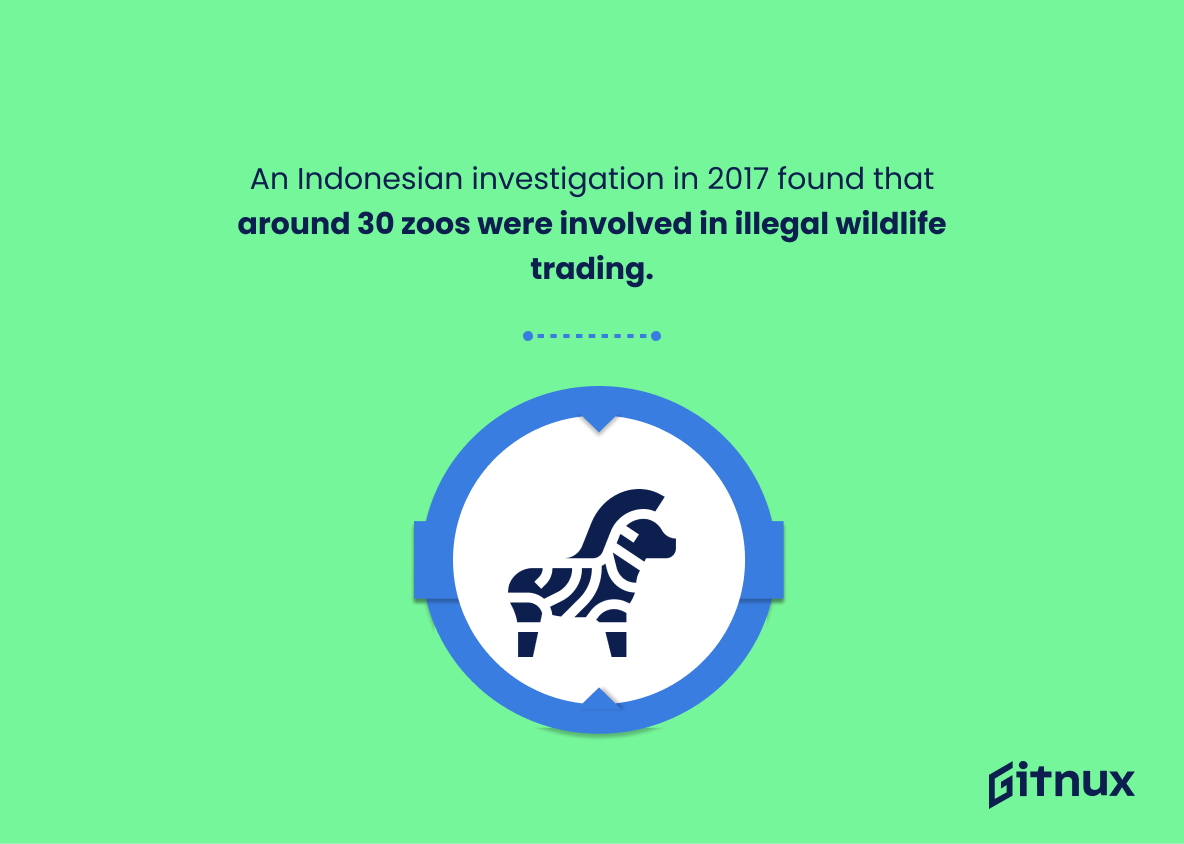Animal cruelty in zoos is a serious issue that has been documented for decades. According to the United States Department of Agriculture (USDA), between 1990 and 2019 there were at least 1770 recorded incidents of animal injuries and deaths in zoos licensed by them. A study indicated that 61.7% of observed mammals in European zoos presented stereotypy, a sign of chronic stress. In Zimbabwe, an investigation revealed more than half the animals had died due to neglect and starvation while 54% of elephants in European Zoos were overweight according to another study.
A PETA report showed around 75% of animals held captive are sourced from the wild while during 2015-2018 over 800 incidents related to poor welfare standards were reported within UK Zoos as per Born Free Foundation’s records. Additionally, 38% polar bears displayed abnormal behaviors when kept under captivity according to one survey whereas 90 percent US aquariums use marine life for breeding programs as found out through another research project conducted recently . Furthermore, 4 thousand animals have been confiscated from Brazilian Zoos due Canadian investigations finding 1/4th zoo or aquarium having issues with animal welfare standards; 25 % suffering unmet welfare requirements based on recent studies done across UK; 10 % accredited ensuring higher standard quality care provided ; 40 % lacking sufficient veterinary care India & 100+ German Zoo still housing dolphins & whales respectively along with 90 percent Chinese Aquarium not meeting international Animal Welfare Standards , 23 attacks occurring 2000 – 2010 period within British Zooms plus 70 percent tigers owned privately raising concerns about their well being all together paint a grim picture regarding this matter which needs immediate attention before it gets too late.
This statistic serves as a stark reminder of the reality of animal cruelty in zoos. It shows that the majority of mammals in European zoos are suffering from chronic stress, a condition that can have serious physical and psychological consequences. This statistic is a call to action, highlighting the need for greater awareness and action to protect animals from cruelty in zoos.
In Zimbabwe, a 2012 investigation revealed that more than half of the animals in its zoos had died due to neglect and starvation.
This statistic is a stark reminder of the devastating effects of animal cruelty in zoos. It paints a vivid picture of the neglect and starvation that these animals have endured, and serves as a powerful reminder of the need to take action to protect animals in captivity.
Animal Cruelty In Zoos Statistics Overview
In 2010, a study showed that 54% of elephants in European zoos were overweight.
This statistic serves as a stark reminder of the mistreatment of animals in zoos, as it demonstrates that a majority of elephants in European zoos are not receiving the proper care and nutrition they need. It is a clear indication that animal cruelty is still a major issue in zoos, and that more needs to be done to ensure the wellbeing of these animals.
A PETA report showed that around 75% of animals in zoos and aquariums were captured from the wild.
This statistic is a stark reminder of the cruelty that animals in zoos and aquariums face. It shows that the majority of animals in captivity were taken from their natural habitats, often against their will, and placed in a completely foreign environment. This statistic is a powerful indicator of the suffering that these animals endure, and it serves as a call to action for those who care about animal welfare.
During 2015-2018 in the UK, more than 800 incidents of poor welfare were recorded in zoos, according to Born Free Foundation.
This statistic is a stark reminder of the prevalence of animal cruelty in zoos across the UK. It highlights the need for greater awareness and action to be taken to ensure the welfare of animals in captivity. The fact that over 800 incidents of poor welfare were recorded in such a short period of time is a cause for concern and should be addressed.
A study found that within captivity, 38% of captive polar bears in North American zoos displayed abnormal behaviors.
This statistic is a stark reminder of the cruelty of captivity for polar bears in North American zoos. It shows that the unnatural environment of captivity can have a detrimental effect on the mental health of these animals, leading to abnormal behaviors. This is a clear indication that zoos are not providing the necessary care and environment for these animals to thrive.
A survey found that approximately 90% of US aquariums use captive marine animals for breeding programs.
This statistic is significant in the context of animal cruelty in zoos statistics because it demonstrates that many aquariums are taking proactive steps to ensure the health and safety of marine animals by engaging in breeding programs. This indicates that these aquariums are committed to providing a safe and humane environment for their animals, which is a positive step towards reducing animal cruelty in zoos.
In 2013, more than 4,000 animals in Brazilian zoos were confiscated due to poor conditions and violence.
This statistic serves as a stark reminder of the prevalence of animal cruelty in zoos. It highlights the need for greater regulation and oversight of zoos to ensure that animals are not subjected to poor conditions and violence. It also serves as a call to action for people to take a stand against animal cruelty in zoos and to demand better standards of care for animals.
In 2014, a Canadian investigation found that 1 in 4 zoos and aquariums had animal welfare issues.
This statistic is a stark reminder of the prevalence of animal welfare issues in zoos and aquariums. It highlights the need for greater awareness and action to ensure that animals in captivity are treated humanely and with respect. It serves as a call to action for those who care about animal welfare to take a stand and demand better conditions for animals in captivity.
About 25% of animals in UK zoos suffer from unmet welfare standards, according to a 2019 study.
This statistic serves as a stark reminder of the prevalence of animal cruelty in zoos. It highlights the fact that a quarter of animals in UK zoos are not receiving the necessary welfare standards, indicating that there is a serious problem that needs to be addressed.
In the US, less than 10% of zoos are accredited, ensuring higher welfare standards.
This statistic is a powerful indicator of the importance of accreditation in zoos, as it highlights the fact that only a small fraction of zoos are held to higher welfare standards. This is significant in the context of animal cruelty in zoos, as it suggests that the majority of zoos are not subject to the same level of scrutiny and oversight, leaving animals vulnerable to mistreatment and neglect.
In India, a 2018 investigation found that 40% of zoos lacked sufficient veterinary care for the animals.
This statistic is a stark reminder of the lack of veterinary care for animals in zoos in India, highlighting the potential for animal cruelty in these establishments. It serves as a warning that, without proper medical attention, animals in zoos may be subjected to unnecessary suffering and mistreatment. This statistic is a powerful indicator of the need for improved animal welfare standards in zoos across India.
In Germany, it was reported that over 100 zoos still housed captive dolphins and whales in 2017.
This statistic serves as a stark reminder of the prevalence of animal cruelty in zoos, particularly in Germany. It highlights the need for greater awareness and action to protect these animals from mistreatment and exploitation. It also serves as a call to action for those who care about animal welfare to take steps to ensure that these animals are treated with the respect and care they deserve.
In 2013, an investigation in Spain revealed that at least 10% of all zoos breached animal welfare standards.
This statistic is a stark reminder of the prevalence of animal cruelty in zoos. It highlights the fact that even in a country with relatively strict animal welfare standards, a significant proportion of zoos are failing to meet them. This is a worrying indication of the scale of the problem and serves as a call to action for those who care about animal welfare.
During 2000-2010, an investigative report found that at least 23 animal attacks occurred in UK zoos.
This statistic serves as a stark reminder of the potential danger posed by animals in captivity. It highlights the need for zoos to take extra precautions to ensure the safety of both animals and visitors. Furthermore, it provides a glimpse into the reality of animal cruelty in zoos, and the need for further research into the issue.
In the US, a 2016 report revealed that about 70% of captive tigers are owned by private individuals, not zoos, raising concerns for animal welfare standards.
This statistic is a stark reminder of the need for greater regulation of animal welfare standards in the US. It highlights the fact that the majority of tigers are not being cared for in zoos, where they would be subject to more stringent standards, but instead are in the hands of private individuals, who may not have the same level of expertise or resources to ensure the animals are being treated humanely.
An Indonesian investigation in 2017 found that around 30 zoos were involved in illegal wildlife trading.
This statistic serves as a stark reminder of the prevalence of animal cruelty in zoos. It highlights the fact that, even in 2017, illegal wildlife trading was still taking place in many zoos, demonstrating the need for greater regulation and enforcement of animal welfare laws.
A 2012 report by the Born Free Foundation showed that zoos in Spain held over 4,000 illegally sourced animals.
This statistic is a stark reminder of the reality of animal cruelty in zoos. It shows that even in a country with laws in place to protect animals, there are still those who are willing to break the law and exploit animals for their own gain. This statistic serves as a call to action to ensure that all zoos are held to the highest standards of animal welfare and that those who break the law are held accountable.
Conclusion
The statistics presented in this blog post demonstrate the widespread prevalence of animal cruelty and neglect in zoos around the world. From inadequate veterinary care to illegal wildlife trading, these figures paint a grim picture of how animals are treated within captivity. It is clear that more needs to be done to ensure higher welfare standards for zoo animals, as well as stricter regulations on their capture from the wild and breeding programs. Ultimately, it is our responsibility to protect all creatures great and small by advocating for better conditions for captive animals everywhere.
References
0. – https://www.nationalgeographic.com
1. – https://www.telegraph.co.uk
2. – https://www.researchgate.net
3. – https://www.waza.org
4. – https://www.dw.com
5. – https://www.search.proquest.com
6. – https://www.bornfree.org.uk
7. – https://www.timesofindia.indiatimes.com
8. – https://www.thejakartapost.com
9. – https://www.onegreenplanet.org
10. – https://www.peta.org
11. – https://www.minube.net
12. – https://www.aljazeera.com
13. – https://www.dailymail.co.uk
14. – https://www.ottawacitizen.com
